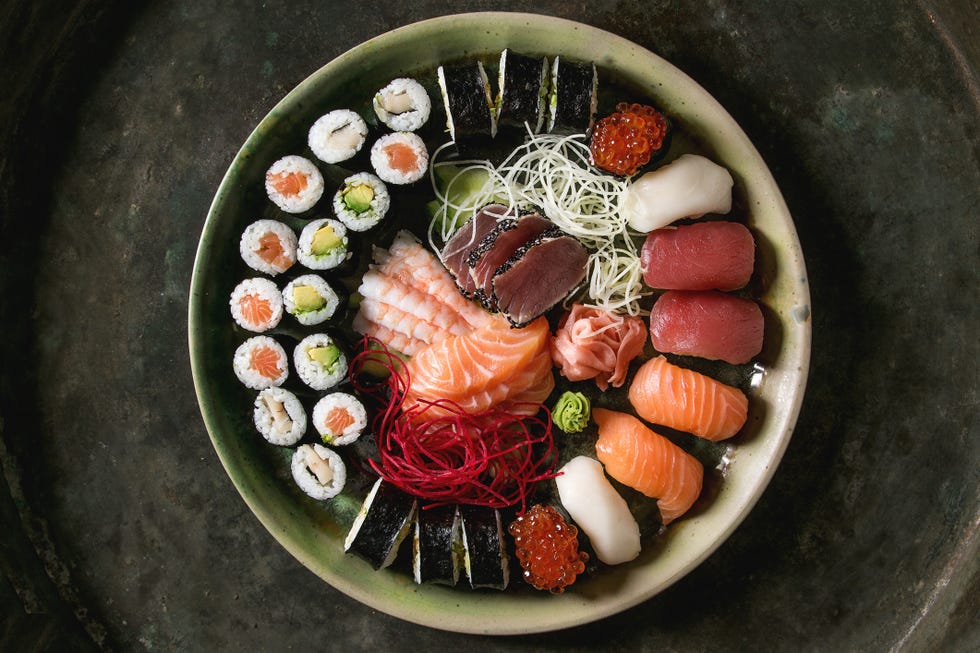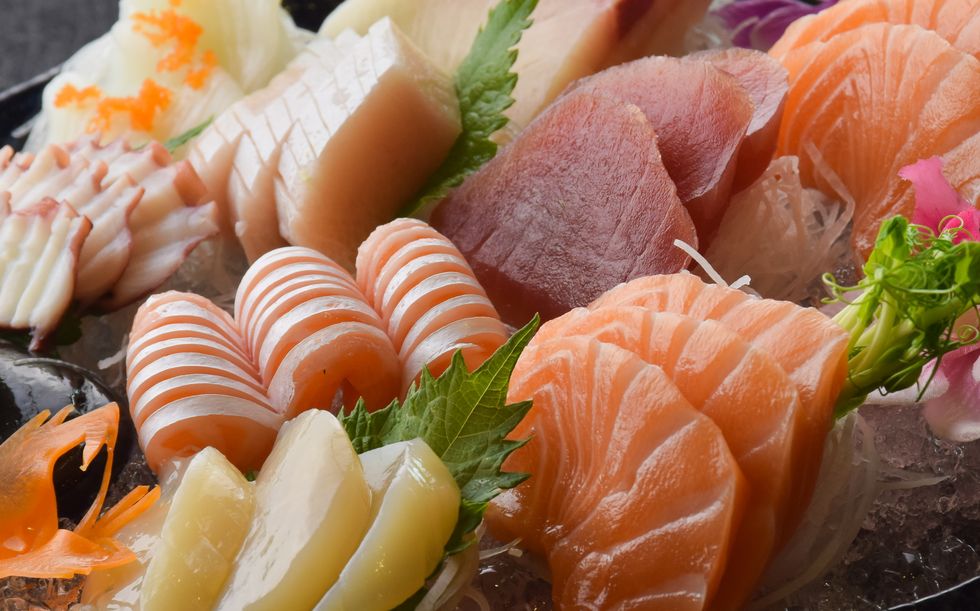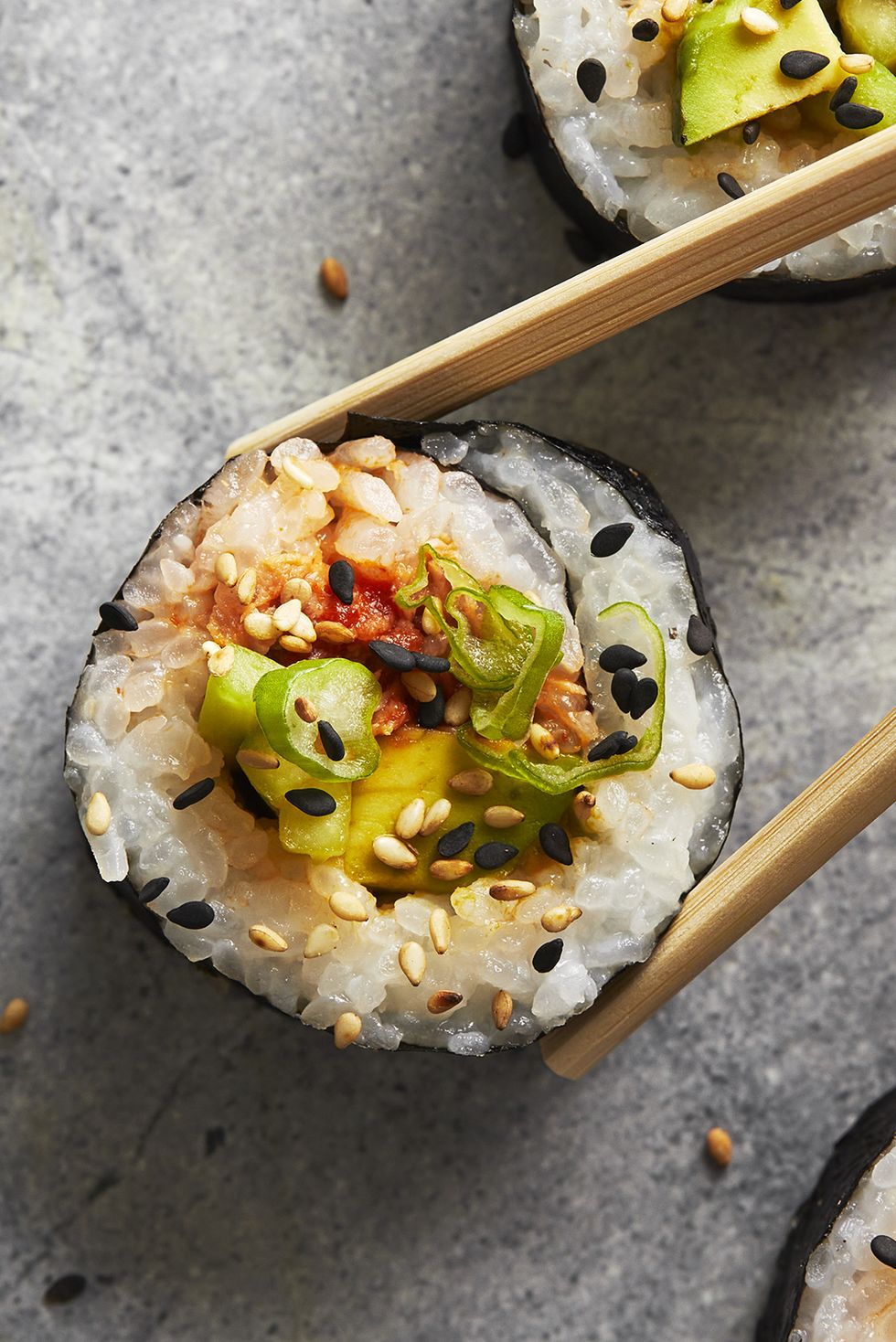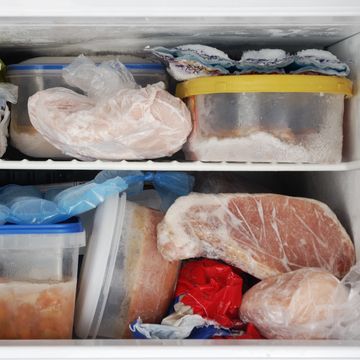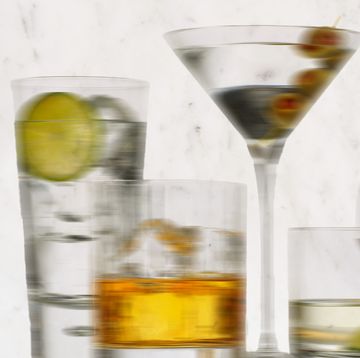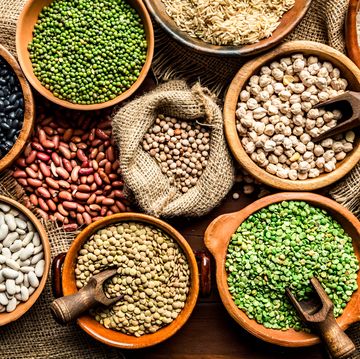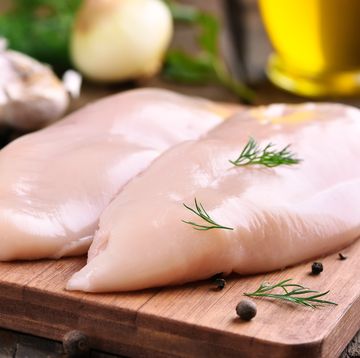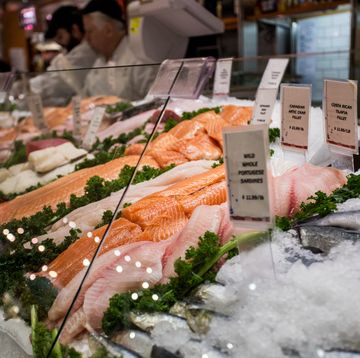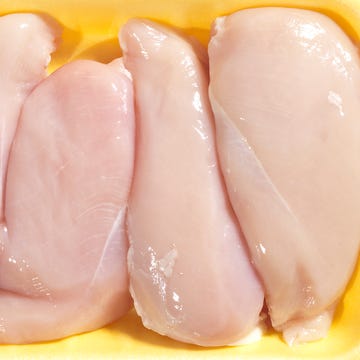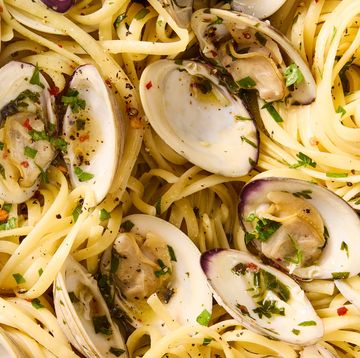You might think of sushi as just fish rolled up in seaweed, but there's so much more. There are several types, from sashimi to chirashi, all of which use a variety of fish and different preparations. Whether you're new to sushi or want to branch outside of the California roll and Philadelphia roll, this guide has everything you need to know. We asked Cyril Kabaoglu, Lead Chef Instructor for Culinary Arts at the Institute of Culinary Education, to walk us through the many types of sushi and fish.
Jump to:
What Is Sushi?
Types Of Sushi
Types Of Fish In Sushi
Sushi Recipes
What Is Sushi?
Sushi means "sour rice" in Japanese, which makes sense because sushi rice is made with vinegar. "Even though we associate sushi with uncooked seafood today, the history of sushi is the history of preservation through fermentation," said Kabaoglu. "It is only the development of refrigeration that has allowed fish to be consumed without fermentation."
Narezushi, which means "salted fish," is one of the earliest forms of sushi. In an effort to preserve fish, according to Kabaoglu, salted fish and cooked rice were placed together to ferment. Since then (and the introduction of the refrigerator) sushi has evolved to what it is today—primarily raw fish.
Types Of Sushi
There are many varieties, but these are the seven main types of sushi:
Nigiri: Nigiri is a slice of fish placed over a small bit of rice.
Sashimi: Sashimi is slices of fish served without rice.
Maki: These bite-sized rolls have seaweed on the outside and rice (and other ingredients) on the inside. To taste maki, try out our spicy tuna roll or spicy crab roll.
Uramaki: Uramaki is similar to maki, but the rice is on the outside, like in a shrimp tempura roll and Boston roll.
Temaki: Temaki, also referred to as hand rolls, are cone-shaped and eaten by hand—no need for chopsticks here. Fillings, like rice, veggies, and fish, are wrapped up in a sheet of nori.
Chirashi: When you think of chirashi, think deconstructed maki. Translating to "scattered" in Japanese, chirashi is a seasoned bowl of rice topped with slices of fish and other toppings like roe (fish eggs) and vegetables.
Hako: Hako sushi is also referred to as "pressed sushi." Ingredients are placed into a box and pressed to form a rectangular shape.
Types Of Fish In Sushi
There are several types of fish used in sushi, but here are some of the ones you'll most commonly find on menus in the U.S., according to Kabaoglu.
Ahi (yellowfin and bigeye tuna): Yellowfin tuna has a mild flavor and firm texture. Bigeye tuna has a buttery flavor due to its high fat content.
Ebi (sweet shrimp, prawns): There are many varieties of shrimp and prawns used for sushi, according to Kabaoglu, such as amaebi and botan ebi (sweet shrimp), aka ebi (red shrimp), and kuruma ebi (Japanese tiger prawns).
Hamachi / kanpachi (yellowtail): "Yellowtail is a leaner, milder, and slightly creamy tasting fish that comes into season during the early summer," he said. "The color is a very light pinkish-white that’s almost translucent."
Ika (squid): "Squid becomes thin and flat when cut into pieces, so it’s usually julienned into thin slivers to make the presentation more attractive for sashimi."
Maguro (bluefin tuna): "Maguro is one of the most highly prized fish around the world," he said. There are different cuts of maguro, such as akami (lean), chutoro (medium-fatty), and otoro (fatty).
Sake (salmon): "Salmon is easily recognized for its bright orange color," said Kabaoglu. "It ranges from lean to fattier pieces, with salmon belly coming at a premium price due to its extra fattiness."
Unagi and anago (fresh and saltwater eel): Unagi has a rich flavor and anago is more mild.
Sushi Recipes
Expertise: food & culture (Sustainability, Health, Travel)
Education: M.S. in Journalism from Columbia University, B.S. in Information Science (User Experience Design) from the University of Michigan
About Me: As the Associate Editor at Delish, Allie is a writer, reporter, and producer of features at the intersection of food and culture. Before Delish, Allie worked for publications including Apartment Therapy and Insider. She even spent time working in restaurants and breweries. Allie has dumpster-dived in NYC to expose food waste, reported on the invasive lionfish you can eat, and wrote about the growing trend of weed weddings. Her health and nutrition stories on hydration culture, bananas, and coffee have generated nearly 2M combined views. She loves traveling, running, and eating her way through new places and even has a thorough Google Maps ranking system for her favorite restaurants and bars! When not writing about food, she's planning her next trip, lifting weights, or training for a race.

